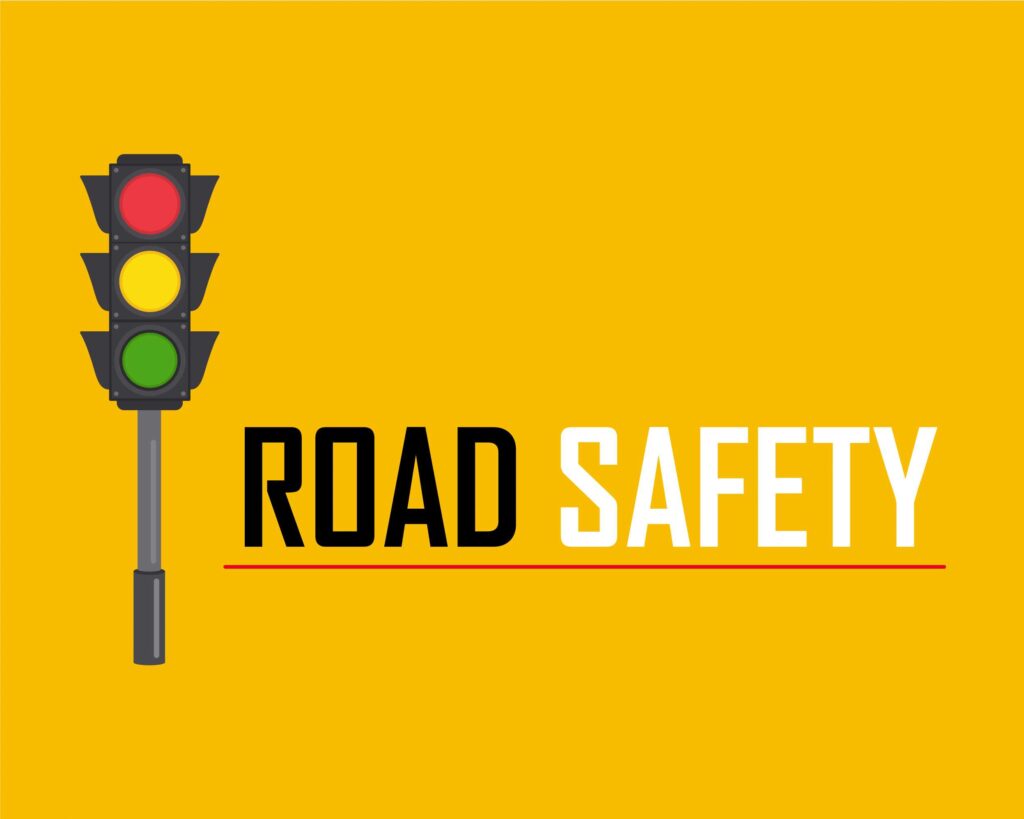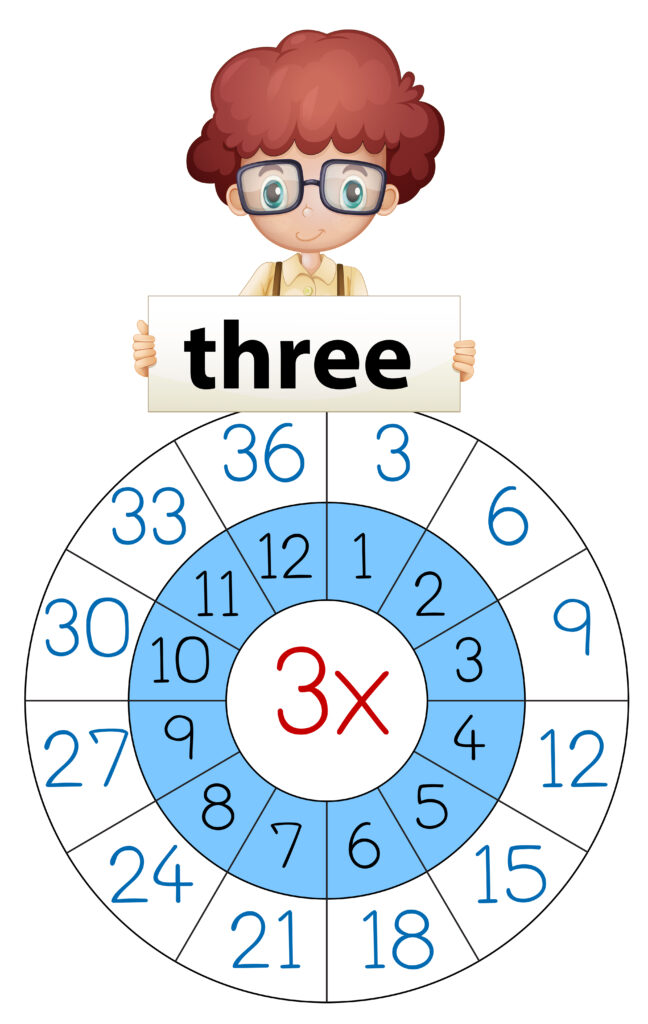TEACHING ROAD SAFETY
Ms M Joosten, Head of Foundation Phase

According to the Centre for Disease Control and Prevention in the United States of America, crash injuries are the leading cause of death for people between the ages of 5-29. Unlike adults, children have not matured enough to understand road safety. With parents at work and not at the side of their children to ensure their safety, it is important that we imprint road safety measures onto their little minds.
Here are some important points we can teach our children to ensure that they are safe on the roads.
Stop, look and cross
One of the most important safety rules for a child is to know is when to cross a road. Children have the tendency to run across the road unaware of vehicles coming their way. Teach your child to stop before they cross, look left and right to make sure that there are no vehicles coming their way and then cross the road, immediately going to the other side.
Crossing roads
Teach your child the importance and purpose of a zebra crossing. Children should know that they cannot cross a road wherever they want to. Teach them the dangers of crossing a road on a bend where they are unable to see oncoming traffic.
Sidewalks
Tell your children that pavements are there for a reason. They are made for people to walk on while the roads are made for cars and other vehicles to drive on. Cars and people have their rightful places on the roads.
Listen
Make sure to teach your child to listen when they are close to a road, even when walking on a pavement. They should listen for the sounds of oncoming vehicles or even the sound of vehicle hooters. They must understand that the louder the sound is, the closer the vehicle.
Never run
Excited children who are on their way home from school or to an exciting event naturally have the tendency to run on the roads. Running distracts children and they become unaware of the dangers that are on the road, even while running on a pavement.
Robots
Even though we do not all live in communities with robots, it is important to teach children what the different coloured lights mean. Teach them that the lights mean something different for drivers and pedestrians. Show them that pedestrians look out for the green man, which means they can cross the road and the red man, which means they may not cross the road.
Let us keep our children safe on the roads in the holidays. Adults should set the example. If we can set a good example on the road, our children will follow. Above all, we should teach our children to pray when they are on the roads. They should be cautious but most of all they need God’s protection in everything they do.
Sources: 13 Important Road Safety Rules To Teach Your Children (momjunction.com)
TIMES TABLES = BASIC SKILLS
Ms E Gouws Head of Intermediate Phase

Times tables are really important.
Times tables are a foundational maths concept.
Times tables are used in every maths topic.
Times tables will improve your child’s speed.
Times tables will improve your child’s accuracy.
Without the times table foundational building block, your child will have a learning gap that can impact their success and confidence in Maths.
What can you do to teach your child their times tables?
Is your child a visual, auditory or kinesthetic learner i.e. does your child learn better by seeing, hearing or moving?
Visual learners need to see to be able to learn and understand.
1. Times table ladders

2. Lists or tables
3. Multiplication flowers or wheels


4. Flash cards
5. Practice worksheets or drills
6. Write the numbers in different colours
Auditory learners need to hear or speak to learn and understand.
1. Recite them out loud according to a rhythm or beat.
2. Use a times tables song.
3. Recite them while clapping hands or tapping on the table or playing an instrument.
Kinesthetic learners need to move while they are learning. Young children use these strategies very effectively because they are very concrete.
1. Recite times tables while the child jumps on the trampoline.
2. Children can write the numbers on a mirror, in the sand, on a whiteboard.
3. Do a flash card ‘treasure hunt’ to find the answers.
Make it fun. Kids will learn anything if they think it is fun.
Be positive. If you tell your child that you hated Maths, your child will have that attitude towards Maths too.
Practise every day. The more you practise a skill, the more proficient you become. Track your child’s daily practice and ensure that it is done.
The results will slowly come.
Sources https://artofsmart.com.au/maths/how-to-teach-times-tables/
12 Strategies for learning Times Tables off by heart. – (learnwithconfidence.com)
PASSING THE BATON, DESPITE AI
Mrs N Ngubane, Head of Senior Phase

AI seems to be taking over but allowing it to replace our role as parents is inconceivable.
Holiday time is on its way with more people in the house. This implies more dishes, laundry, cleaning, etc. Well, on the one hand, it is no longer a problem since AI in most cases, saves energy. There are machines that can be used to complete many of these chores – dishwashers, washing machines, vacuum cleaners, etc.
Children have it much easier now. Why then is there conflict, laziness or even counting how often it must be done? Do you see how a parent can never be replaced? Who is there to guide, instruct and checkup? We need to teach our children to become responsible citizens.
Children may enjoy using AI for fun activities. However, as parents we need to teach them to do their chores with joy and pride – where there is a sense of satisfaction about the job done. As they grow older there should be an increasing sense of responsibility where reminders are no longer necessary.
One of the special events we will commemorate this holiday is Easter (or Passover as some call it). This event makes us think of bread without yeast. Yes, a genuine offering. May we teach our children the importance of Jesus Christ offering Himself for our sin. This flowed from His loving heart. Likewise, we need to fulfill our roles and responsibilities with the same commitment and love. So, in the same way we can pass it on to our children.
AI, although helpful and good in many ways, can never rob a parent of their God-given responsibility. God has entrusted us with His little souls. Can He also trust us not to deviate from His plan for our lives and our children’s lives? Let us take it to heart that we will please our God in leading our children in His truth and grace.
ESCAPING YOUR CHILD’S COMFORT ZONE
Mr D van Straten, Head of FET Phase

In April 1945 an army medic Desmond T. Doss walked onto the battlefield of the Maeda escarpment armed with nothing but his Bible and religious faith. As a conscientious objector, he believed that killing was wrong. Despite facing ridicule for this decision, Doss put his own life on the line to save 75 men by evacuating the wounded near enemy lines, resulting in him being awarded the Congressional Medal of Honor.
Although people like Desmond Doss, who move out of their comfort zone to do the extraordinary are rare, it also seems a rarity for people to move out of their comfort zone to improve what they do, or even to allow discomfort in others that will lead to growth.
In an interesting TEDx Talk, Bill Eckstrom states that “what makes you uncomfortable is the only way to growth…In predictability comfort is found. Thinking or doing something continuously in the same way stifles growth”.
We all have our comfort zone – that space, or circumstance, where I feel comfortable that I am able to do what is expected of me without feeling out of my depth. Answer a question: What happens I am taken out of my comfort zone?
A comfort zone can be dangerous place. It can inhibit progress. It can lead to stagnation. Yet it is most dangerous if other the movement of other people out of their comfort zones makes me uncomfortable. Answer another question: What happens to me if my child, or a child in my class is taken out of their comfort zone? Is my first inclination to bring them back to safety? Do I react by wanting to avoid discomfort for someone else? Or do I recognise that the growth opportunity that it presents?
Three thoughts:
- Bear up under discomfort if that discomfort could lead to progress.
- If discomfort is not harmful to a learner or child, allow that discomfort to shape and bring about growth. Be aware of wanting to eliminate all discomfort.
- Create safe opportunities for discomfort in the classroom.
There are many reasons why bread may not rise: old yeast, water that is too hot, not enough resting time, but one cause could be insufficient heat. Discomfort is sometimes an important ingredient for growth.
Sources: Eckstrom, B. 2008. Why comfort will ruin your life. [Web:] Why comfort will ruin your life | Bill Eckstrom | TEDxUniversityofNevada (youtube.com) (Date of access: 11 March 2024)
Singh, J. 2023. The Heartbreaking True Story Behind Andrew Garfield’s ‘Hacksaw Ridge’ [Web:]
Andrew Garfield’s ‘Hacksaw Ridge’ Is Based on a Heartbreaking True Story (collider.com) (Date of access: 11 March 2024)
KIDS LEARN BETTER ON PAPER, NOT SCREENS? NOW WHAT?
Mrs G Geldenhuys, Head of Academics

A groundbreaking study shows kids learn better on paper, not screens. Now what?1
This interesting headline in The Guardian caught my attention recently.
The Department of Education’s (American) recent survey that was released last year found that text comprehension skills of 13-year-olds had declined alarmingly – where even the worst performing students now read below the reading skills level recorded in 1971.
While the blame is often placed on factors like Covid-19 and remote learning, there’s been little discussion about the impact of digital reading devices. Reading from screens presents multiple challenges including access to multiple distractions and the tendency to scrolling and scanning, rather than focused reading.
There is a growing body of research that is investigating the impact of reading digital texts compared to printed texts and finding that paper and prints win every time.
The study by a team of neuroscientists at Columbia University’s Teachers College in the US found that children (aged 10 to 12) engaged in deeper reading when reading on paper compared to screens. Deep reading is not just about learning what the text says, but is characterised by comprehension, deductive reasoning, critical analysis, reflection and insight.
Interesting to note, is that in Sweden, schools are taking steps to reintroduce a focus on printed books, quiet reading time and handwriting practice.
As parents, where does this place us?
While we may not always be able to control a school’s use of digital resources over paper, we can exert influence at home. We can encourage the daily reading of printed books at home.
And at school? Perhaps we should not be too keen on throwing away our printed books as it seems print is best when it comes to learning.
Source 1 https://www.theguardian.com/lifeandstyle/2024/jan/17/kids-reading-better-paper-vs-screen
